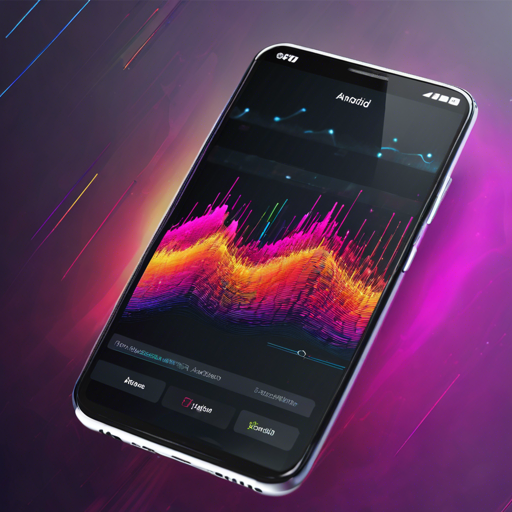Welcome, coding wizards! Today, we will dive into the captivating world of audio visualization on Android using the Audio Visualizer library. This lightweight and easy-to-use tool allows you to transform audio into stunning visual displays that dance to the rhythm of the sound. Let’s break it down step-by-step.
Getting Started
Before you embark on your audio visualizing adventure, ensure you’ve set up the necessary prerequisites:
- Android Studio installed on your machine.
- An Android device or emulator for testing.
Once you’ve set up your environment, you’ll need to integrate the Audio Visualizer library into your Android project.
Step 1: Add Dependencies
To use the audio visualizer in your application, add the following dependency in your build.gradle file:
implementation 'com.gauravk.audiovisualizer:audiovisualizer:0.9.2'Step 2: Permissions and Layout
Using the audio visualizer requires permission to access the device’s microphone. You’ll need to add this permission to your AndroidManifest.xml file:
<uses-permission android:name="android.permission.RECORD_AUDIO"/>For devices running Android 6.0 (API 23) and above, you will need to request this permission at runtime.
Now, add the visualizer to your XML layout:
<com.gauravk.audiovisualizer.visualizer.BlastVisualizer
xmlns:custom="http://schemas.android.com/apk/res-auto"
android:id="@+id/blast"
android:layout_width="match_parent"
android:layout_height="match_parent"
custom:avDensity="0.8"
custom:avType="fill"
custom:avColor="@color/av_dark_blue"
custom:avSpeed="normal"/>Step 3: Implementing the Visualizer
In your Java code, you will want to set up the visualizer to respond to audio. Here’s how you can do this using the MediaPlayer:
// Get a reference to the visualizer
mVisualizer = findViewById(R.id.blast);
// Initialize MediaPlayer and play audio
int audioSessionId = mAudioPlayer.getAudioSessionId();
if (audioSessionId != -1) {
mVisualizer.setAudioSessionId(audioSessionId);
}You can also send raw audio bytes directly to the visualizer, giving you more flexibility in the audio data you want to visualize.
Step 4: Managing the Visualizer Lifecycle
It’s important to release the visualizer when your activity is destroyed. Do this by overriding the onDestroy() method:
@Override
protected void onDestroy() {
super.onDestroy();
if (mVisualizer != null) {
mVisualizer.release();
}
}Step 5: Customize Your Visualizer
You can customize visualizer attributes like type, color, density, and speed:
| Attribute | Description |
|---|---|
| avType | Changes the Visualization type – outline or fill. |
| avColor | Defines the color used in the visualizer. |
| avDensity | Sets the density of the visualization between (0,1). |
| avSpeed | Defines the speed of the animation – slow, medium, and fast. |
Troubleshooting
If you encounter any issues, here are some quick troubleshooting ideas:
- Ensure the microphone permission is granted. Without it, the visualizer will not work.
- Check if the audio session ID is correctly retrieved from the MediaPlayer.
- Make sure you’re using the correct version of the library compatible with your app’s API level.
For more insights, updates, or to collaborate on AI development projects, stay connected with fxis.ai.
Conclusion
And voilà! You now have a dazzling audio visualizer at your fingertips. You can choose between different visualizer types like BlobVisualizer, WaveVisualizer, and many more to match your app’s aesthetic. At fxis.ai, we believe that such advancements are crucial for the future of AI, as they enable more comprehensive and effective solutions. Our team is continually exploring new methodologies to push the envelope in artificial intelligence, ensuring that our clients benefit from the latest technological innovations.
Ready to Play?
Now go ahead and implement your very own audio visualizer! Feel free to explore and customize the effects to make your application stand out.

